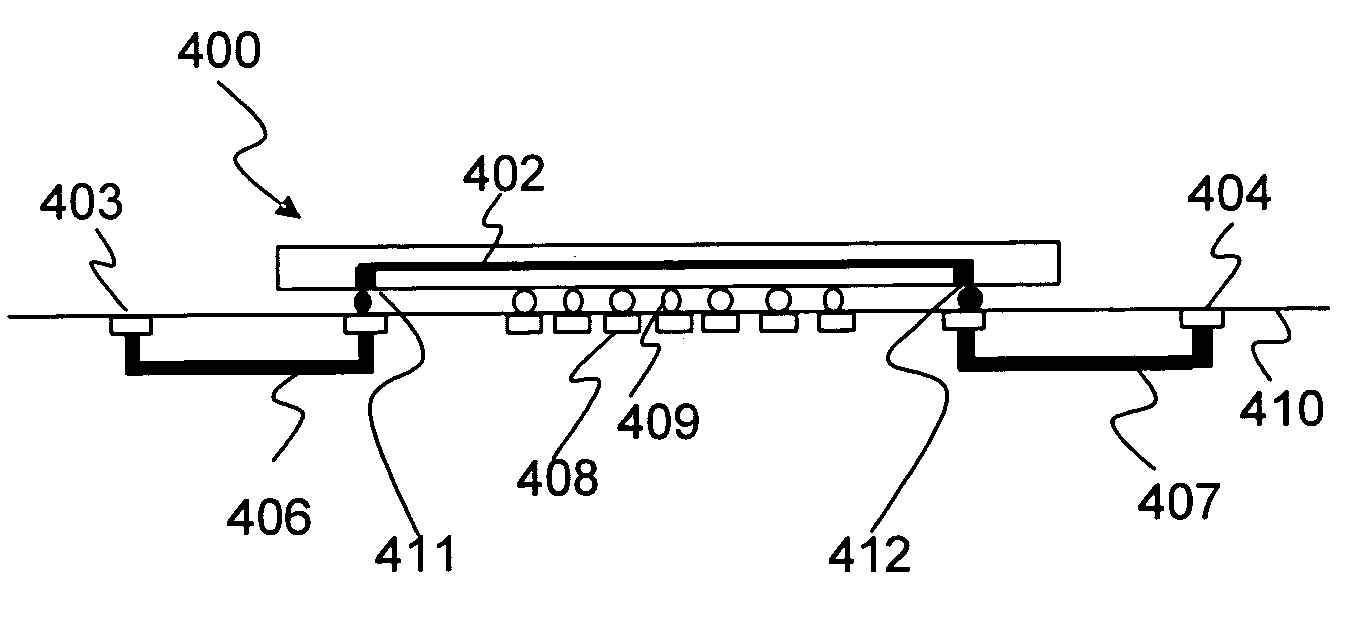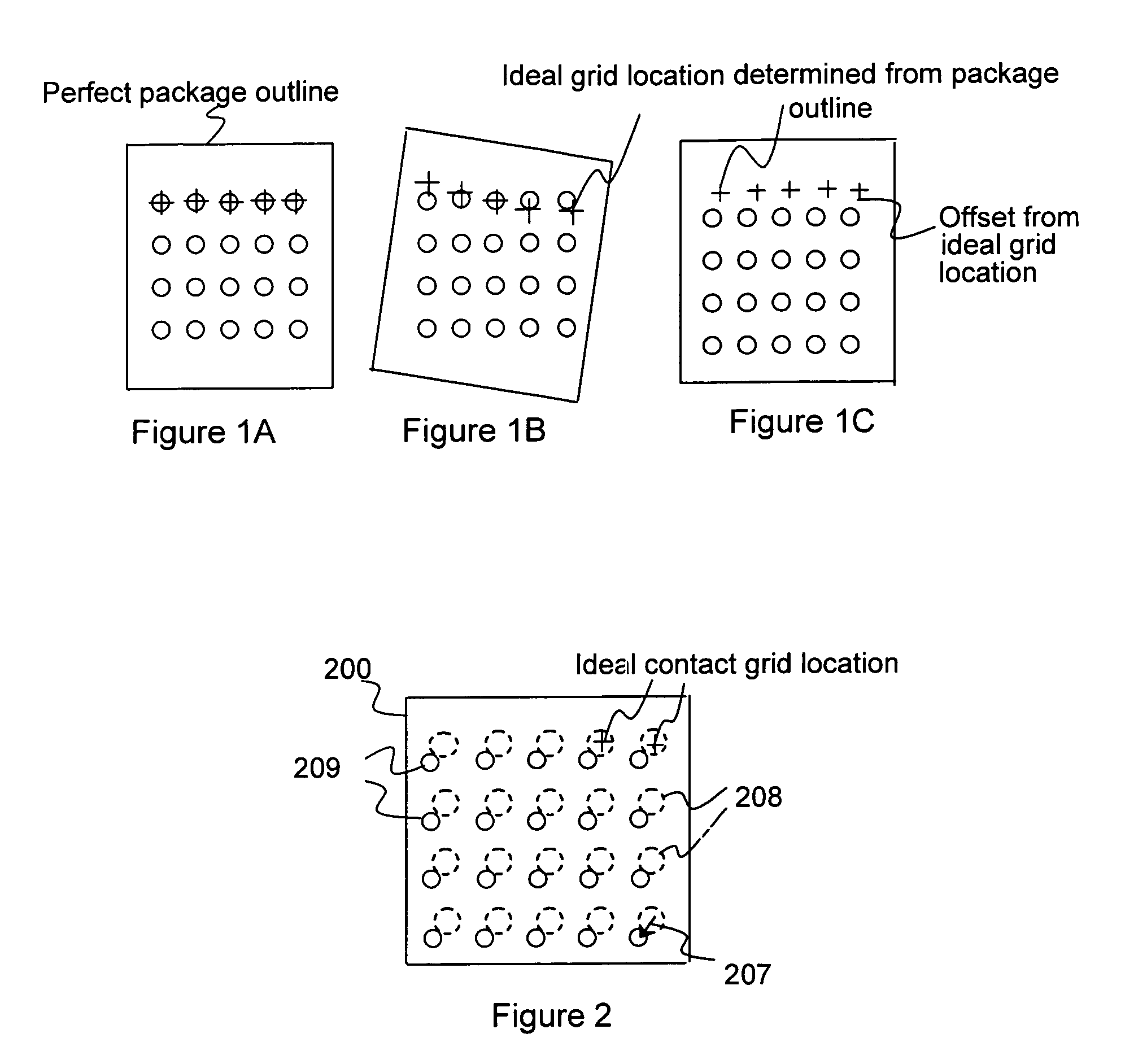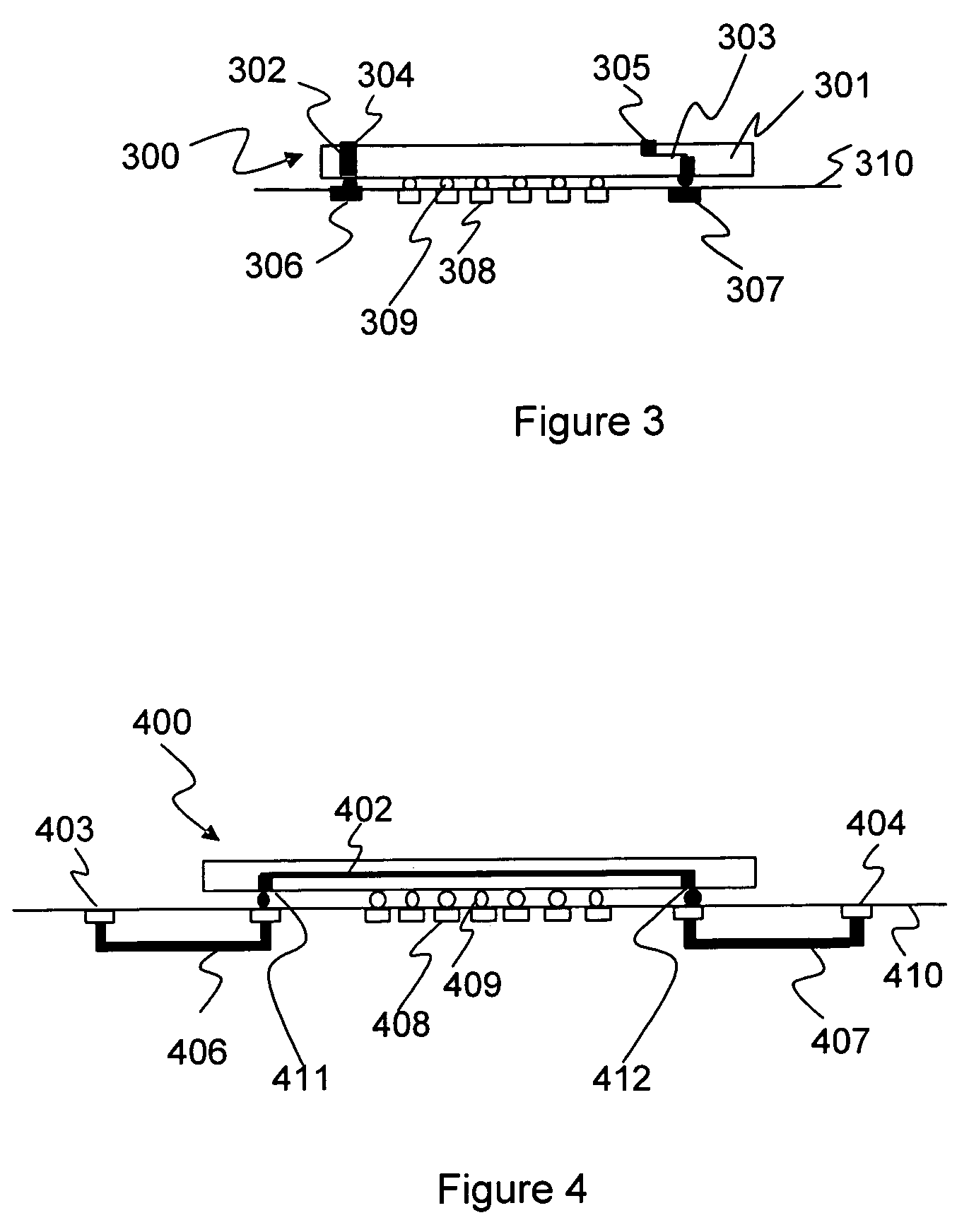Apparatus and method for predetermined component placement to a target platform
a technology of predetermined components and target platforms, applied in semiconductor/solid-state device testing/measurement, semiconductor devices, semiconductor/solid-state device details, etc., can solve the problems of large difficulty in accurately placing components on pcb, increase in the operation speed of integrated circuits (ic), and uncertainty of component placement, etc., to achieve accurate control, increase component yield, and increase tolerance
- Summary
- Abstract
- Description
- Claims
- Application Information
AI Technical Summary
Benefits of technology
Problems solved by technology
Method used
Image
Examples
Embodiment Construction
[0043]According to the present invention, the alignment and probing techniques to improve the component placement accuracy in assembly are described. More particularly, the invention includes methods and structures to detect and improve the component placement accuracy on a target platform by incorporating alignment marks on component and reference marks on target platform with various probing techniques. A set of sensors grouped in an array to form a multiple-sensor probe can detect the deviation of displaced components in assembly. Merely by way of example, the invention has been applied to placing packaged semiconductor devices onto electronic substrates for the manufacture of electronic systems. But it would be recognized that the invention has a much broader range of applicability. Further details of the present invention can be found throughout the present specification and more particularly below.
Alignment Mark
[0044]According to preferred embodiments, an alignment mark is a r...
PUM
| Property | Measurement | Unit |
|---|---|---|
| conduction | aaaaa | aaaaa |
| anisotropic conductive | aaaaa | aaaaa |
| shape | aaaaa | aaaaa |
Abstract
Description
Claims
Application Information
 Login to View More
Login to View More - R&D
- Intellectual Property
- Life Sciences
- Materials
- Tech Scout
- Unparalleled Data Quality
- Higher Quality Content
- 60% Fewer Hallucinations
Browse by: Latest US Patents, China's latest patents, Technical Efficacy Thesaurus, Application Domain, Technology Topic, Popular Technical Reports.
© 2025 PatSnap. All rights reserved.Legal|Privacy policy|Modern Slavery Act Transparency Statement|Sitemap|About US| Contact US: help@patsnap.com



